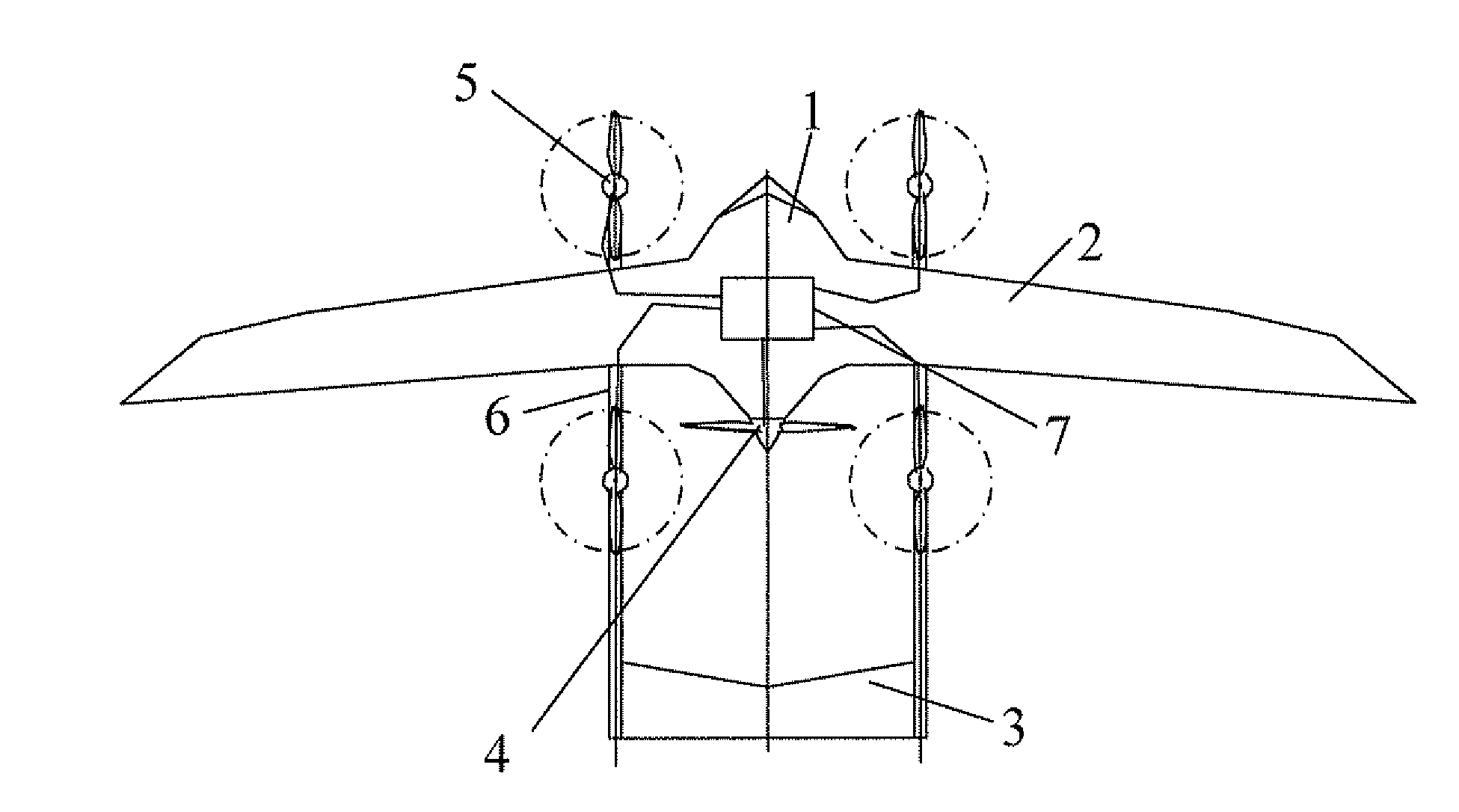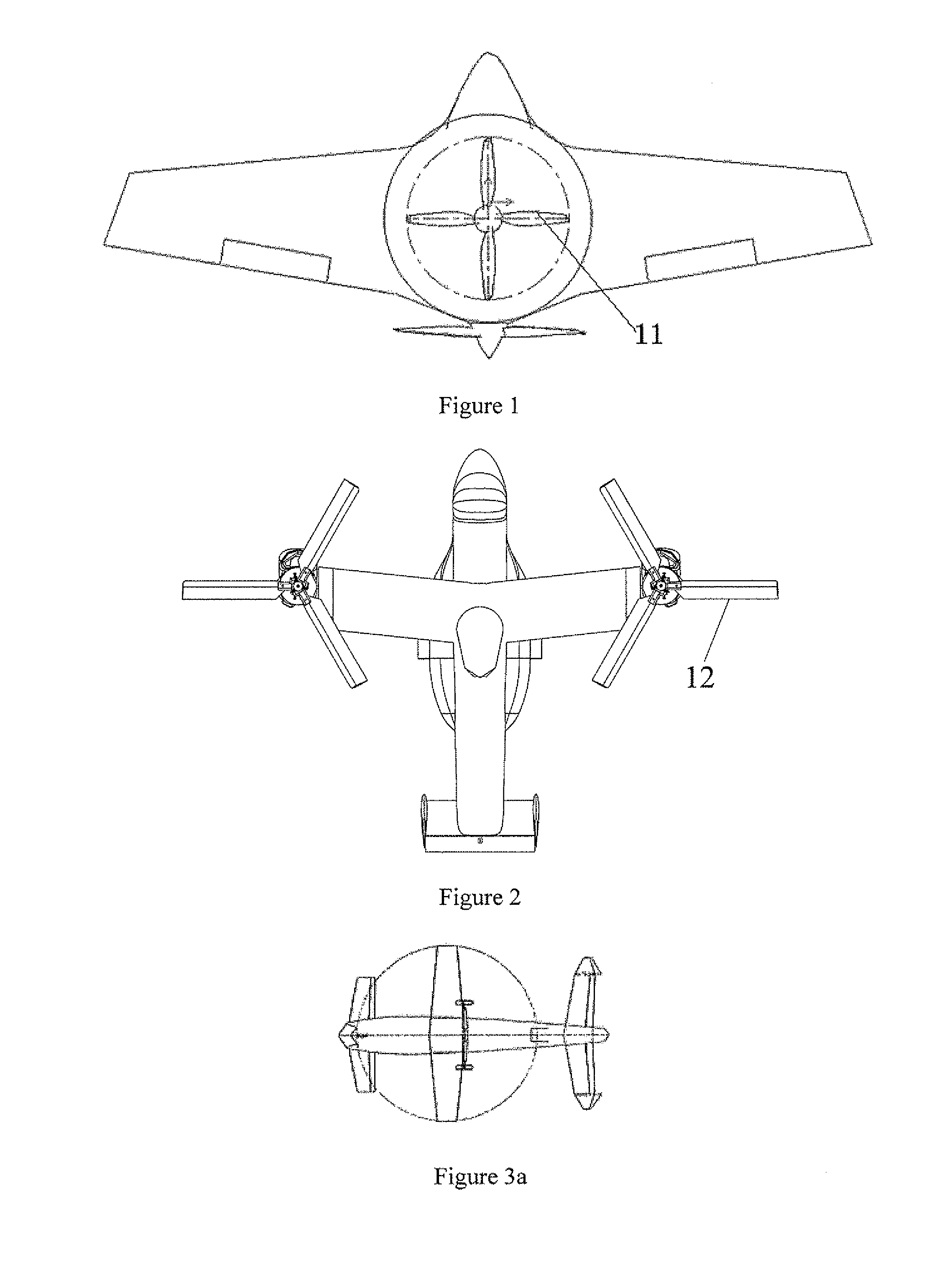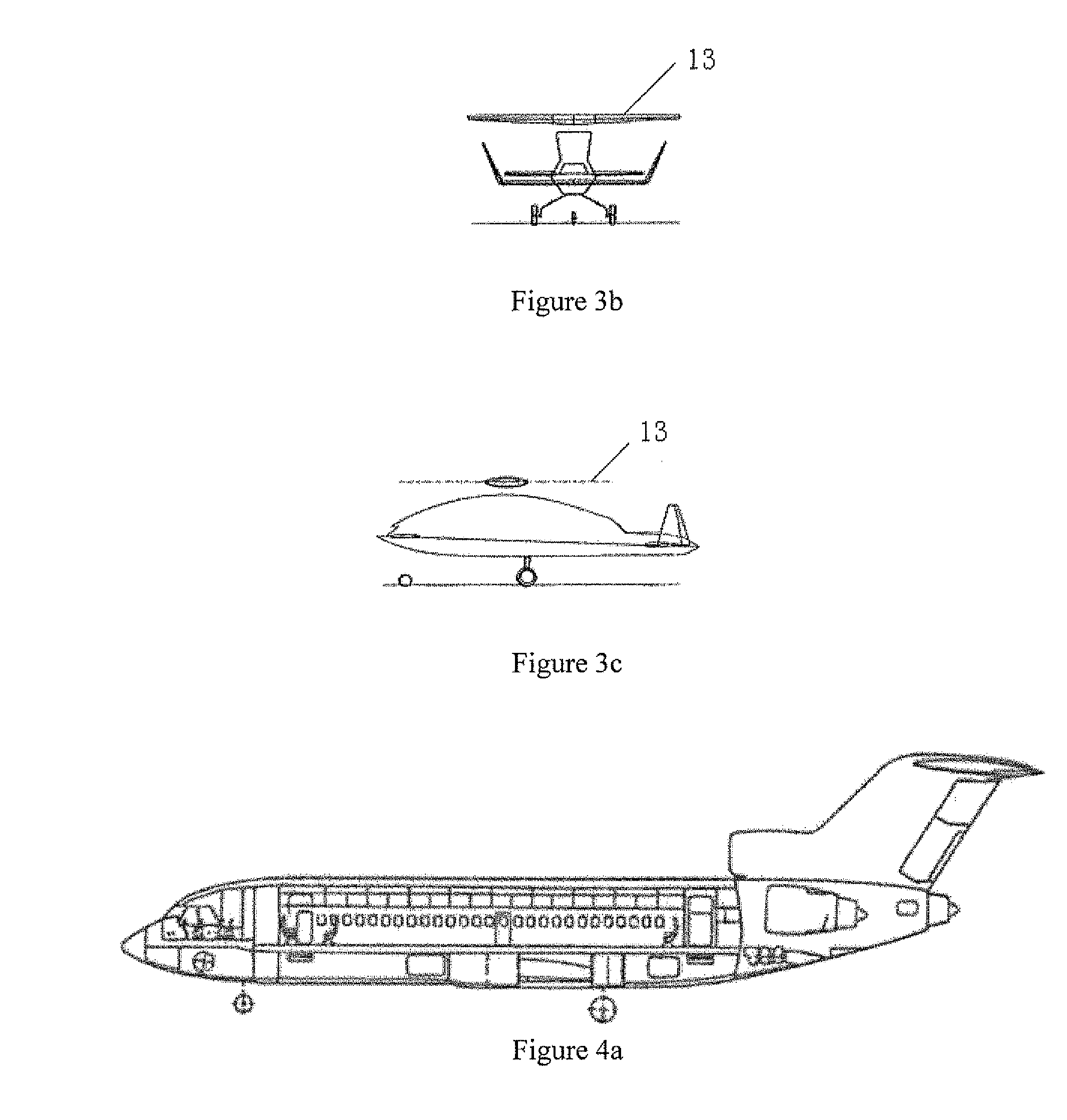Fixed-wing and electric multi-rotor composite aircraft
a composite aircraft and electric multi-rotor technology, applied in the field of aircraft, can solve the problems of consuming more power, severely affecting the efficiency of the direct connection with the dynamic system, and affecting the performance of the fixed-wing aircraft in remote rural areas without dedicated airports
- Summary
- Abstract
- Description
- Claims
- Application Information
AI Technical Summary
Benefits of technology
Problems solved by technology
Method used
Image
Examples
first embodiment
The first embodiment
[0047]A fixed-wing and electric multi-rotor composite aircraft of the present invention as shown in FIG. 5 comprises a set of fixed-wing aircraft parts, which comprises airframe 1, main wing 2, tail 3 and fixed-wing dynamic system 4 (also named fixed-wing aircraft dynamic system), namely, the fixed-wing dynamic system 4 provides power to the fixed-wing aircraft parts. The persons skilled in the art shall understand that the main wing and the fixed-wing in the text refer to the same part; it is named the fixed-wing relative to the rotor; it is named the main wing relative to the tail according to the aircraft structure. On the basis of the fixed-wing aircraft parts, therein four sets of electric multi-rotor dynamic system 5 are added, which provides power to the rotor helicopter parts. But it is not limited to four sets. The electric multi-rotor dynamic system 5 can be realized by using the specific composition and structure of the existing helicopter, so no furth...
second embodiment
The Second Embodiment
[0069]As shown in FIGS. 14 and 15, the difference between this embodiment and the first embodiment lies mainly in: there are six sets of electric multi-rotor dynamic system in this embodiment, therein four sets are installed on the main wing, and the other two sets are installed at the location near the tail on the airframe. As shown in FIG. 15, a jet apparatus 8 is installed at the aircraft tail, and the exhaust air can be used as power to propel the aircraft to fly forward. The rest parts are basically the same as in the first embodiment.
PUM
 Login to View More
Login to View More Abstract
Description
Claims
Application Information
 Login to View More
Login to View More - R&D
- Intellectual Property
- Life Sciences
- Materials
- Tech Scout
- Unparalleled Data Quality
- Higher Quality Content
- 60% Fewer Hallucinations
Browse by: Latest US Patents, China's latest patents, Technical Efficacy Thesaurus, Application Domain, Technology Topic, Popular Technical Reports.
© 2025 PatSnap. All rights reserved.Legal|Privacy policy|Modern Slavery Act Transparency Statement|Sitemap|About US| Contact US: help@patsnap.com



